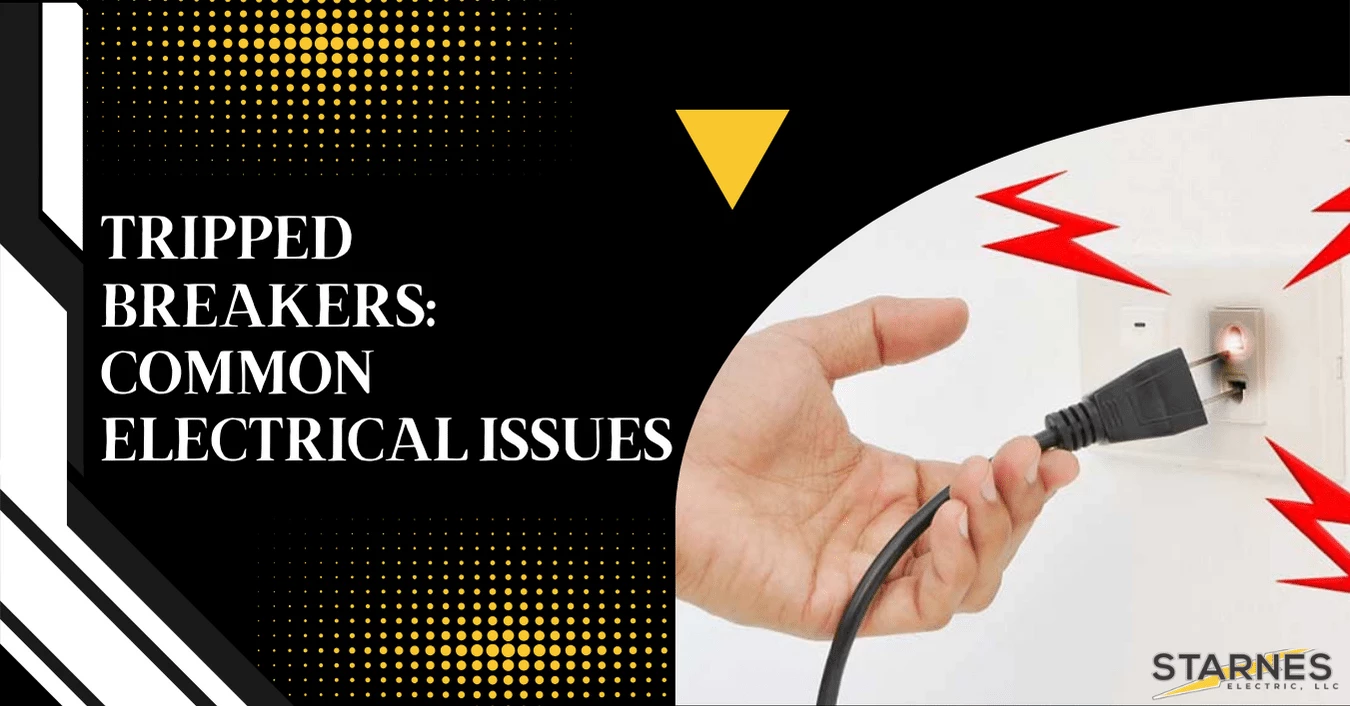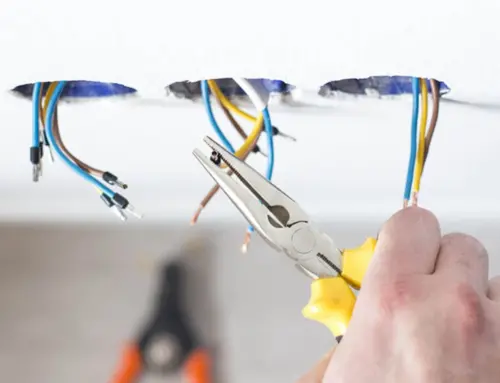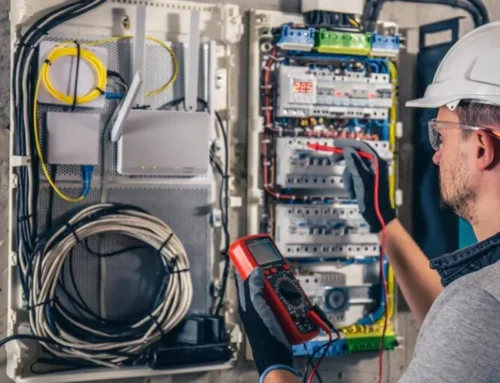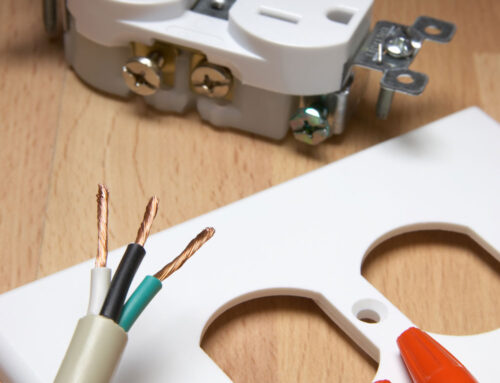Are you tired of having to constantly reset tripped breakers in your home? Do you find yourself getting frustrated with flickering lights or appliances that suddenly stop working? Electrical issues are a common problem that many homeowners face, and if not addressed promptly, they can not only be inconvenient but also potentially dangerous.
In this blog post, we will explore some of the most common electrical issues that homeowners experience, such as tripped breakers, and provide tips on how to diagnose and fix them.
By the end of this post, you’ll have a better understanding of your electrical system and be equipped with the knowledge to tackle these issues head-on and keep your home powered up and running smoothly. So, let’s dive in and shed some light on these pesky electrical problems!
What Are Tripped Breakers, And Why Do They Occur As Common Electrical Issues In Homes?
A tripped breaker is a crucial safety feature that automatically cuts off electrical power to a specific area of your home. Its primary purpose is to prevent circuits from overheating, which can potentially lead to dangerous fires.
Breakers typically trip for three common reasons: circuit overloads, short circuits, or ground fault surges.
- Circuit overloads occur when multiple appliances or fixtures draw power simultaneously from the same circuit, surpassing its designated capacity. This excessive demand for electricity causes the breaker to trip, safeguarding the circuit and preventing potential damage.
- Short circuits, on the other hand, happen when a hot wire inadvertently comes into contact with a neutral wire. This contact creates a low-resistance path, resulting in an abrupt surge of current flow. The breaker quickly interrupts the circuit to prevent any hazards, cutting off the power supply.
- Similarly, ground faults involve a hot wire unintentionally touching a ground wire or the metal box enclosing the electrical wires. This occurrence can also trigger the breaker to trip, mitigating the risk of electrical shocks or other safety hazards.
By promptly tripping in these situations, breakers play a vital role in maintaining the safety and integrity of your home’s electrical system. Regular inspections and proper electrical load management can further enhance the effectiveness of breakers in preventing potential electrical hazards.
How Can Homeowners Identify The Cause Of A Tripped Breaker And Safely Reset It To Restore Power?
Identifying the cause of a tripped breaker requires a systematic process of elimination. Begin by disconnecting all appliances connected to the affected circuit. Then, reset the breaker by switching it to the “off” position and back to “on.” If the breaker immediately trips again, it suggests the presence of a short circuit or ground fault in the circuit. However, you can proceed to the next step if the breaker remains on.
To pinpoint the specific appliance causing the overload, start by plugging in one appliance at a time. Monitor the breaker closely during this process. If the breaker trips after filling in a particular appliance, it indicates that the appliance is the source of the overload. This method allows you to identify and address the problematic appliance without causing further damage to the electrical system.
When working with electrical panels, always exercise caution. Use one hand to prevent the creation of a path for electricity through your body and ensure you are standing on a dry surface. Prioritize safety and consider seeking assistance from a qualified professional if you are unsure or uncomfortable performing these troubleshooting steps yourself.
Are There Certain Electrical Appliances Or Situations That Are More Likely To Cause Tripped Breakers, And How Can These Issues Be Prevented?
High-wattage appliances like microwaves, hairdryers, space heaters, and air conditioners are common culprits of tripped breakers, especially if multiple such appliances operate on the same circuit simultaneously.
To prevent overloads, spread out high-demand appliances across different circuits and consider unplugging them when not in use. Upgrading your electrical panel or adding additional circuits can also provide a more permanent solution to frequent overloads, particularly in older homes that may not be equipped to handle the electrical demands of modern appliances.
When Should Homeowners Seek Professional Electrical Assistance To Address Recurring Tripped Breaker Problems In Their Homes?
While resetting a tripped breaker is often straightforward, recurrent issues signal the need for professional intervention.
If a breaker trips repeatedly without a clear overload, you may deal with a more serious wiring issue, such as a short circuit or ground fault.
Likewise, if you notice any signs of electrical problems, such as flickering lights, buzzing sounds, or a burning smell from outlets or the breaker box, it’s time to call an electrician.
Professional electricians can diagnose and repair underlying issues, ensuring your electrical system is safe and up to code.
Tripped breakers are a protective response designed to protect your home from electrical fires and damage. Homeowners can maintain a safe electrical system by understanding what causes breakers to trip and how to address these issues safely.
Remember to distribute appliance use, be mindful of the capacity of your circuits, and upgrade your system as necessary. However, when tripped breakers become a frequent problem or are accompanied by other signs of electrical issues, professional help is not just a recommendation—it’s a necessity.
Seeking assistance from qualified electricians ensures that your home remains a haven, free from the hazards of electrical malfunctions.
We’re Your Go-To Place for Electrical Safety and Efficiency
At Starnes Electric LLC, we understand the inconvenience and potential danger that tripped breakers and other electrical issues can pose to homeowners. Our team of certified electricians is dedicated to providing top-notch electrical services, ensuring your home is safe, efficient, and compliant with all electrical codes.
Our team brings years of experience and expertise to every job. At Starnes Electric LLC, we pride ourselves on our thorough understanding of home electrical systems, from the latest technologies to the unique challenges of older wiring.
Whether you’re facing frequent tripped breakers, planning a major renovation, or need a routine inspection, our electricians have the knowledge and tools to do the job right.
Frequently Asked Questions
What should I do if my breaker keeps tripping?
If you’re experiencing frequent tripped breakers, try to identify any patterns—such as specific appliances causing the issue—and reduce the load on that circuit. If the problem persists, contact Starnes Electric LLC for a professional assessment.
How much does it typically cost to have an electrician address tripped breakers?
The cost can vary depending on the complexity of the issue. Simple diagnoses and fixes range from $150 to $300, while more complex problems requiring circuit or panel upgrades can cost upwards of $500 to $1,200. We provide upfront pricing and detailed estimates before any work begins, ensuring there are no surprises.
When is the best time to upgrade my home’s electrical panel?
If your home is over 20 years old, you’re experiencing frequent tripped breakers, or you’re planning to add more appliances or renovate, it might be time to consider an upgrade. Our team can assess your current system and recommend the best options.
Don’t Let Electrical Issues Disrupt Your Life Or Compromise Your Safety!
Whether you’re dealing with tripped breakers, planning an upgrade, or needing emergency repairs, Starnes Electric LLC is here to help. Our commitment to quality, safety, and customer satisfaction makes us the preferred choice for homeowners in our community.
Contact us today to schedule a consultation. Our friendly, professional team is ready to address all your electrical concerns, ensuring your home is safe, efficient, and well-maintained. At Starnes Electric LLC, we’re not just solving problems but building lasting relationships based on trust and quality service. Let us be your electrical safety and efficiency partners.





